 Your new post is loading...

|
Scooped by
rob halkes
|
New report (May 2017) from Ericsson
Healthcare transformation is taking root, moving away from hospitals and closer to the home. Key findings - Healthcare becomes decentralized, moving from hospitals towards homes
Consumers are frustrated with inconveniences and doctor wait times; 39 percent of chronic patients prefer online consultations to face-to-face meetings. Close to two in three consumers say wearables that monitor and administer medication are important to better manage chronic ailments,leading to reduced visits to the doctor. More than half of cross-industry decision makers feel decentralizing healthcare to local centers will improve efficiency and address resource scarcity. - Patient data is centralized, turning hospitals into data centers
35 percent of consumers say that online access to a central repository of medical records will help them easily manage the quality and efficiency of their care; 45 percent of cross-industry experts consider the central repository as a breakthrough in healthcare provisioning. Access to patient data is considered important to improve healthcare. Doctors will become data scientists and data security will become paramount, as 46 percent of cross-industry decision makers already consider data security to be an issue. - Increasing dependence on wearables and remote treatments makes 5G essential to provide reliable and secure services
56 percent of consumers worry about their wearable health patches running out of battery; 42 percent of cross-industry decision makers expect devices connected to 5G networks to consume less power. 61 percent of consumers say remote robotic surgery is risky as it relies on the internet; and 35 percent of cross-industry decision makers expect 5G to provide reliable low-latency connections. 47 percent of telecom decision makers say that secure access to an online central repository is a key challenge and expect 5G to address this.

|
Scooped by
rob halkes
|
In an opinion piece published online in Medical Economics, part of the Modern Medicine Network, Henry Anhalt, DO discusses the current status of Precision Medicine as 2016 draws to a close. Reflecting on President Obama’s 2015 State of the Union address, in which he launched the Precision Medicine initiative – a program that aims to revolutionize health outcomes by taking a personalized approach to medicine and research – he acknowledges the ongoing debate as to whether this approach to treating disease can truly deliver on its promises. He also recognizes the uncertainty for precision medicine that lies ahead as the US enters a new presidential term.
One of the solutions Anhalt proposes is for clinicians to ask themselves how they can implement the tenets of precision medicine when treating patients in the immediate present. His suggested answers to this question included enabling patients to access their own health record data: “So they can review it when they need to and share it with others when they want”. He then discussed The U.S. Department of Veterans Affairs’ push for patient access to health records through its pioneering “Blue Button” initiative and how it is a step in the right direction towards this goal.
Another suggestion involves how the community engages study participants in research, as: “There are many ways patients today can participate in research without requiring a visit to a large research hospital.” Anhalt continues, “For example, if patients can download their health records, one easy opportunity they may have is to donate them to research. For people with Type 1 diabetes, we offer a patient platform that allows that patient to connect with others who have Type 1 diabetes and participate in online research. To truly achieve the promise of precision medicine, it’s going to require that our patients have the understanding and motivation to become citizen scientists.”
He concluded with advice for clinicians that even if today they cannot practice precision medicine in full, they should at least strive for individualized care. “As physicians, we are trained to ask questions such as, ‘What are your symptoms; how long have you had these symptoms?’ and so forth. But what are the questions we’re not asking that help us get a more holistic view of a patient’s health?” He argues that greater empathy in clinical interactions could help achieved more personalized care in the present.
Finally, Anhalt points out that, despite the wealth of precision medicine research is being done, there is a long way to go until it can be fully and successfully integrated into healthcare systems nationwide. “We’ve just scratched the surface with the Precision Medicine Initiative, and it will be interesting to see what takes place in 2017 and beyond as we focus more on patient outcomes.”

|
Scooped by
rob halkes
|
Population health strategies have the benefit of advanced remote monitoring and telemedicine capabilities than in decades past, but to create a truly successful telehealth program you have to keep an open mind. That is the message that Banner Health, an integrated, nonprofit health system based in Phoenix, Arizona, has taken to heart from its ongoing ambulatory care program for patients with chronic and complex diseases which is powered by Philip’s telemedicine platform. [...] The program – named Intensive Ambulatory Care or Banner iCare — launched June 1, 2014, and the goal was to provide better care and reduce costs for the most complex patients – those with two or more chronic conditions — who happen to account for the highest cost in terms of healthcare dollars spent on their care. Many population health programs focus on one chronic disease or another, but Dr. Hargobind Khurana, senior medical director of health management at Banner Health, said Banner’s approach was different. “The idea was to say that there are complex, chronic patients who don’t have one chronic disease but have multiple chronic diseases and they have a hard time managing these diseases …these patients keep coming to the ED. They are in and out of the hospital,” he said in a recent interview. “Our goal was to be more broad than just one or two chronic diseases, so we focused on this aspect and said let’s find the high-utilizers who end up [repeatedly] in the hospital, in the ED.” [...]
But the population health strategy isn’t just high-tech. It is high-touch too. “There’s a large team central team that’s dedicated for this work – health coaches that go to the patient’s home, there’s a social worker, there’s a pharmacist there are tele-nurses and there’s a physician who kind of helps coordinate their care,” Khurana explained.[...] When the program launched, not enough patients who Banner felt could benefit were choosing to participate. The reason was simple: they didn’t want to switch their primary care providers as the program protocol required. “We went in with this program thinking that what we would do is we would identify these patients and we’ll become their entire care team, so basically we would go to these patients and say, ‘We will become your primary care physician and we would also be the care team that would help with the telehealth platform,'” Khurana said. “Part of the lesson learned there was that patients were hesitant in the idea of leaving their PCP and entering a new entity.” So Banner iCare pivoted. “So we changed that model about a year into it and told them, ‘You don’t have to leave your PCP. We will be an add-on to your care team. So you will have your PCP and you will work with them but we will be supporting your care as an addition to your PCP,’ ” he recalled. “That really helped the patients feel more comfortable joining my team, andI think that was a good learning.” Changing the model based on feedback shows that in year two Banner Health was willing to take on the additional complication of keeping PCP’s apprised of any intervention they did to help the PCP’s patients. All without overwhelming the primary care doctor with raw data that was being transmitted through Philips’ telehealth platform. Currently, about 500 patients are being cared for using the Banner iCare program and to date more than 1,000 have utilized the program. Khurana said people drop off when they move, change health plans, or die, adding that very few people leave the program because they didn’t like it. Banner has seen some savings too. The Banner iCare program has reduced the total cost of care per beneficiary by 27% per year. It has also reduced hospitalizations by 45%. The program is ongoing, and Khurana believes that while they have hit upon an effective program, all the answers aren’t available yet. For Philips, which codeveloped the program with Banner, there have been some important lessons too. “We learned and showed that telehealth technologies can have a big impact on the care for patients dealing with multiple chronic conditions,” said Jeroen Tas, CEO of Philips Connected Care and Informatics, in an email. “We also learned that the process of integrating telehealth and other connected health solutions is a delicate one. It will only be successful if existing care pathways are redesigned. Change management and education are needed too as telehealth enables a more integrated and multidisciplinary care team approach than the traditional doctor-patient interaction.” That traditional assumptions must be questioned was something that Banner Health also learned through the iCare program. And those assumptions center around who is a high-cost patient.[..] “You can’t use retrospective costs or utilization data and assume that it would be the same in the future because it doesn’t account for the regression to the mean,” Khurana said, adding that just because some patients “had a bad year doesn’t mean that they are going to keep having bad years, year after year after year.” In other words, the entire thinking about who is going to be an expensive patient in the future requiring coordinated care needs to be overhauled. “We have to be smarter in building and developing more intelligent algorithms to identify patients who would be future high utilizers,” he said. “That will be the next focus of population health – to have better predictive analytics.”

|
Scooped by
rob halkes
|
Consumers want technology to monitor every aspect of their life and Wearable Tech, IoT and all emerging technologies are working together towards such goal. The question remains: Will this help or hurt providers’ efforts?

|
Scooped by
rob halkes
|
About the Precision Medicine Initiative Far too many diseases do not have a proven means of prevention or effective treatments. We must gain better insights into the biology of these diseases to make a difference for the millions of Americans who suffer from them. Precision medicine is an emerging approach for disease treatment and prevention that takes into account individual variability in genes, environment, and lifestyle for each person. While significant advances in precision medicine have been made for select cancers, the practice is not currently in use for most diseases. Many efforts are underway to help make precision medicine the norm rather than the exception. To accelerate the pace, President Obama unveiled the Precision Medicine Initiative (PMI) — a bold new enterprise to revolutionize medicine and generate the scientific evidence needed to move the concept of precision medicine into every day clinical practice. Read about the scientific justification of the Precision Medicine Initiative in a New England Journal of Medicine Perspective by NIH Director Dr. Francis S. Collins and former NCI director Dr. Harold Varmus.

|
Scooped by
rob halkes
|
Most doctors in France, Germany and the UK believe innovations such as wellness apps and wearable monitors are here to stay. However, they also see some drawbacks. See this blog by eMarketeer based on research by Ipsos Healthcare
Doctors throughout Europe already work in an environment full of advanced technology, including highly sophisticated diagnostic and surgical equipment and other state-of-the-art devices. These days, though, they also need to deal with the gadgets in the hands of consumers—their patients. And doctors have mixed feelings about the explosion of mobile apps, wearables and other digital tools aimed at boosting consumers’ awareness and control of their own health.
That’s not to say that medics don’t see essential value in a lot of the new tools on offer. According to the “Digital Doctor Report 2015” from Ipsos Healthcare, 72% of doctors polled in France, Germany and the UK had either used or recommended an app, online health forum or wearable technology in the previous year. While four in every five doctors felt technology was increasingly important and would play a permanent role in healthcare, many were unsure what that role would be. For example, most doctors sampled by Ipsos were wary of overstating the benefits of mobile health apps. Some 13% said that mobile technology would eventually replace routine checkups for stable patients with chronic problems—but 26% disagreed. One in 10 said that disease/compliance monitoring apps used alongside drugs would become a prerequisite for patients being reimbursed by insurance companies for their health expenses—but 37% said this wouldn’t happen. Asked whether apps were key to improving patients’ adherence to health regimes, 15% of doctors said they agreed—but 21% said apps were not key. Moreover, significant numbers of doctors had doubts about the usefulness of some digital health solutions, at least in their current form. Mobile technology such as apps and wearables were a particular focus of concern—though the level of worry varied from one country to another. In the UK, for example, the overwhelming majority of the sample agreed that “mobile technology is a reliable means of monitoring health data”; just 11% disagreed. But in France, 24% disagreed, and in Germany, the proportion was 29%. Similarly, most doctors did think mobile technology would help simplify access to healthcare. But more than one in 10 in the UK and Germany did not agree. In France, a notable 33% of doctors did not subscribe to this view. Many doctors in the Ipsos study were also thinking ahead to potential conflicts arising from consumer use of apps and other digital tools. After all, most healthcare professionals in advanced economies have already seen large numbers of patients self-diagnosing with the aid of Google search or the websites of medical organizations—and arguing with their doctors as a result.
While doctors polled by Ipsos generally acknowledged that technology could help with therapy and monitoring chronic conditions such as diabetes and heart ailments, 27% feared that mobile apps would create more conflict with patients. Again, the top worries varied by country. Nearly two-thirds of doctors in the UK were concerned that patients could misinterpret data from digital health tools. In Germany, about six in 10 respondents felt these tools could fuel hypochondria, and in France, more than half of doctors were unhappy about the lack of security and privacy involved in using them. Because the application of digital technology to day-to-day consumer healthcare is pretty new, most doctors (73%) couldn’t say exactly what they wanted it to do. But among those that did have a clear view on this, monitoring was the top function they identified.
See more at: http://www.emarketer.com/Article/Europes-Doctors-Embrace-Digital-HelpersUp-Point/1012837?ecid=NL1002#sthash.bqTvbQbq.dpuf

|
Scooped by
rob halkes
|
From HIMSS, by John Sharp: Blogs, Journals, News, White Papers To help small practices, vendors need to think like patients A report on a series of presentations on patient engagement at HIMSS15. The presentations included statistics on patients strong preferences to be notified by texting of appointments and other reminders and their desire to be equal partners in healthcare decision making
Telemedicine market to soar past $30B
An increasing aged population and healthcare costs are propelling the market growth. Why what works for Uber may not work for medical apps
While many innovators and futurist like to see Silicon Valley startups with high valuations as a model for healthcare. This excellent piece points out the weakness of this argument - healthcare is based on a social contract, the risk of losing everything (not an option in healthcare), unnecessarily galvanizing the opposition, misreading the law, Uber’s strategy hasn’t even worked in the transportation industry yet (they now have 70 lawyers). Patients and Families as Partners
Amer Haider of the startup Doctella shares his experience with his father’s hospitalization and the frustration of trying to obtain personal health information. Amer is an advocate of involving patients in patient safety through the use of checklist, but this hospital frustrated his attempts to get involved in a family member’s care. My Medical Records | How To Get Them
From the Louisiana Health Quality Forum which is promoting getting one's health data - how and what to get - directly to patients. An important direct to consumer approach which should be copied by other states. Will Personal Health Information Exchanges (PHIE) Lead the Consumer Medical Record Revolution and Bridge the Gap Between PHRs and EHRs? This strong argument for patient access to medical records proposes an approach from a Frost and Sullivan white paper on using PHIEs rather than HIEs to get patients their data. Quotes leaders in the field including David Kibbe.. Sharing Your Fitness Tracker Data? ‘Pace’ Yourself This article discusses the potential uses of fitness tracking devices in research. Runkeeper meets researcher.
Social Media Use in Chronic Disease: A Systematic Review and Novel Taxonomy From the American Journal of Medicine, this literature review showed that "48% of studies indicating benefit, 45% neutral or undefined, and 7% suggesting harm. Using social media to provide social, emotional, or experiential support in chronic disease, especially with Facebook and blogs, appears most likely to improve patient care." 5 Things You Should Know About Your Electronic Medical Records
From the Cleveland Clinic blog, a good basic primer for patients on their portal. The author, Steven Nissen, MD, warns that it may include medical jargon you may not understand but it will keep you well informed about your health numbers and your doctor's recommendations (assuming your portal has Open Notes).
The 2015 #HIT99 Results Are In..
.

|
Scooped by
rob halkes
|
"Portal me" ... It is the way we finally want to go: integrated hard and software all directed at a healthier life in cooperation with professionals, insitutes, family, friends and peers we do want... Jeff Belden inspires!

|
Scooped by
rob halkes
|
Implementing an eHealth initiative is the first step in moving your healthcare organization to the forefront of eHealth technology. For instance, how would your organization make use of this revolutionary eHealth initiative innovation? How would you react if patients began asking to connect their eHealth applications to your information system? eHealth initiatives require an analysis of your entire workflow from operations to systems and technology, from clinical and financial performance to implementation. eHealth initiative general outcomes expected include benefits to providers and to patients, rapidly expanding technological tools, and even more use of internet based activities. Working with The Fox Group’s eHealth experts through our three strategic eHealth Thought Lab meetings allows you to get customized knowledge on the processes and strategic changes that must be made in order to maximize the eHealth initiative potential within your organization. Each eHealth Thought Lab meeting will be tailored to your situation, and can jump-start your organization’s eHealth initiatives. By the end of this series of three strategic meetings, you will have an appreciation of the potential for your organization to embark on a meaningful eHealth initiative. [..] I. The Current eHealth Initiative: a short, to the point workshop introducing the main elements of the eHealth initiative, a working definition, the effectiveness and implications of eHealth in the future. You select the proper internal stakeholder audience of your organization. - This workshop is a quick tour around basic issues, examples of effective applications, and rationales for undertaking an eHealth initiative.
- Benefits include (1) development of a common frame of reference within your internal stakeholder audience; (2) correction of mis-perceptions and biases; (3) clarify expectations as to the impact of an eHealth initiative; (4) follow up; and (5) motivation to get things going.
II. eHealth Discussion and Analysis: a workshop reviewing your current eHealth applications, including electronic health record systems, mobile health, internet-based, social media interaction tools, telemedicine, and similar components. It will also address your organizational enthusiasm and/or challenges to creating a strategic planning process addressing the future in eHealth technologies as they unfold. Discussion between your representatives and experts from The Fox Group will run deep into several aspects of the eHealth initiative phenomenon. - Using tailored examples fitting your organization, moderators of The Fox Group will demonstrate how eHealth technologies pertinent to providers, patients and your organization can result in a successful eHealth initiative for your organization.
- Implications for your organization to be addressed include (1) consequences of the use of eHealth technologies to operations, organization, and Information Technology resources; (2) costs of care and administration; and (3) satisfaction of patients and other stakeholders.
III. eHealth Strategic Planning: a strategic workshop, where you discuss currently existing concepts, modules, and devices available to you and your patients. The final step is to identify the strategic actionable steps to implement your eHealth initiative, bridging the gap between what is available and what needs to be developed. - Within the workshop, you and your selected stakeholders will reflect on the organization’s actual situation, both from a medical, organizational (structures, processes, staff, IT), and financial and patient perspective. Wishes, challenges, and criteria for a successful eHealth initiative development path are explored. Initial ideas about a specific eHealth initiative can be discussed and placed in a framework of pros and cons.
- Financial considerations will be addressed as well. This strategic plan outline will be tailored to capture the ROI, patient and provider benefits and ultimate outcome expectations of your eHealth initiative. Government, payor, and regulatory issues are addressed as well.
- Expectations and outcome: The output is a structured roadmap defining the path to development and implementation of your eHealth initiative, fully tailored to your specific situation. [..]

|
Scooped by
rob halkes
|

|
Scooped by
rob halkes
|
The Dutch ehealth monitor of the Netherlands has been released recently. There is no English translation yet, nor a summary, but a English infographic is presented at this post on the website. Here you can see that ehealth is steadily but I guess, firmly growing in NL.
More healthcare users say their GP allows them to make online appointments: from 7% in 2013 to 13% in 2014; or request repeart prescriptions: from 21% to 30%. More GP's, 93% to 98% (!) and medical specialists, 66% to 75% use mainly or exclusively electronic records!
However no major shifts are found in the use of eHealth compared to 2013. There will be greater coordination in the area of eHealth. The Ministry of Health Welfare and Sport sets concrete objectives, and parties 'in the field' seek each other out for joint activities!
Four things stood out in the study: - eHealth in the workplace is still not always 'plug and play'
- Process innovation is difficult
- Healthcare users and healthcare providers do not always see sufficient added value
- Healthcare users are often unaware of possibilities already available
For a real, large scale use of eHealth a good balance is needed between the investment in money and effort and the experience added value in terms of imprived care, convenience and financial benefits.
See here for Nictiz and here for Nivel the sources and down;oads of inforgroaphic (in English too) and the report (Dutch).

|
Scooped by
rob halkes
|
From Rob Halkes, manager Patient View in the Netherlands, and advisor to Health20.
This uear's edition of Health20, London, November 10-12, will especially be of large interests to both Health App developers, Healthcare providers and patients. Alexandra Wyke from PAtient View will present the outcomes of the first global research for Patients' wishes and demands regarding their health apps. Here is a first view to the outcomes,
But at the conference more will be presented!

|
Scooped by
rob halkes
|
{…] The title of my talk was “Giving Up Control: Leading in the Digital Era”. One key data point from Gallup that continues to astound me is that worldwide only 13% of people are engaged in their work. It’s higher in the US, standing at 30% but that’s still terrible! I believe that a big reason for this is that we don’t give enough autonomy to, and respect the growing agency of our employees, especially for the Millennials who crave purpose and meaning in their work. The hierarchies that exist in our organizations were designed for a bygone era where efficiency and scale were paramount. But today, speed, innovation, and creativity are the sources of competitive advantage. Companies have been responding, deploying collaboration platforms and enterprise social networks to connect people throughout the organization. Shrinking the distance between previously siloed departments, or between executives and the front lines sounds great — unless you’re a middle manager. The biggest problem leaders face in the digital era is that power and influence are being decoupled from titles and organizational structure. So how can you be an effective leader? Here are the three things that organizations can do: - Create a Culture of Sharing. Instead of hoarding information to be powerful, leaders have to become facilitators who accelerate the sharing of information across a networked organization.
- Encourage the Practice of “Followership”. The size and quality of your network, not your title, determines how much power and influence you have, and thus, how much you can get done. If employees could build their “followership” across the organization and even outside the organization, then even if their titles or jobs changed, they could still be highly effective. This creates tremendous security that allows these managers to make tough decisions that might otherwise jeopardize their livelihood.
- Ensure Networks are being used to Make Meaningful Decisions. People are smart — they won’t devote time to engaging unless they know it’s going to make a difference. The biggest mistake I’ve seen organizations do when trying to transition into the digital era is to use these new tools to create the equivalent of a digital water cooler — talking rather than getting work done. No wonder they don’t last! Get leaders to pay attention, make key decisions on these networks and people will come.
What each of these has in common is the need to give up control. In the talk, I shared the journey I’m going through as the parent of teenagers, as they push for greater autonomy and trust to make their own decisions. In our work, if we truly want to have an engaged workforce, then we’re going to have to lead differently, and establish a new kind of relationship and trust that’s created and deepened with these digital tools.

|
Scooped by
rob halkes
|
Most accountable care organizations have health information technology in place to improve quality and lower costs, but many say difficulties with data exchange are keeping them from reaching their potential. Of the 62 ACOs polled by Premier healthcare alliance this past summer, 88 percent report "significant obstacles" in integrating data from disparate sources. Also, 83 percent say they have a hard time fitting analytics tools into their workflow. As ACOs grow, gathering data from more and different care settings, these challenges become more accute, according to Premier. Cost and ROI are also cited as key roadblocks to more effective implementation of health IT, according to 90 percent of respondents. Even when ACOs have successfully merged health IT systems, "they aren't able to effectively leverage data and analytics to derive value out of their investments given the pervasive issues with data quality, liquidity and access, as well as issues with integrating data from disparate sources," said Keith J. Figlioli, Premier's senior vice president of healthcare informatics, in a press statement announcing the findings.
The numbers reported in the survey suggest interoperability is a "pervasive problem among ACOs, and it could stymie the long-term vision for ACO cost and quality improvement if not addressed," Figlioli added. The good news is that ACOs are reporting heartening improvements in clinical quality (66 percent), preventive screenings and vaccinations (63 percent), chronic disease management (59 percent) and health outcomes (55 percent). But those percentages could be even higher. "While accountable care organizations are providing quality care for many patients, even more could be accomplished if interoperability issues were addressed," said Jennifer Covich Bordenick, chief executive officer, eHealth Initiative. "However, the cost of interoperability can be prohibitive for many organizations." In a Sept. 24 call discussing the report's findings, Bryan Bowles, Premier's vice president for population health solution management, noted that this new era of shifting risk from payers to providers requires a lot of these organizations, necessitating that they manage health at both an indvidual and population level, and make smart use of clinical, claims, financial and administrative data. See more here in the original blog

|
Scooped by
rob halkes
|
Representatives Diane Black (R-TN) and Peter Welch (D-VT) introduced bipartisan legislation in the U.S. House of Representatives to build upon the progress of Accountable Care Organizations (ACOs) in shifting the reimbursement of healthcare providers away from the traditional “fee for service” model to a focus on improving the health outcomes of patients. The ACO Improvement Act (H.R. 5558) will improve the ACO model by providing additional incentives focused on health outcomes, increasing collaboration between patients and doctors, and providing ACOs with additional tools, according to a news release issued from their offices. According to an article in Med City News, the legislation would allow ACOs to utilize remote patient monitoring tools and maintain and share technology that delivers images with more remote providers. Many current restrictions that apply to originating care sites would be waived for telemedicine provided through ACOs, according to the bill. “As a nurse of over forty years, I know firsthand the challenges facing health care professionals as they seek to provide their patients with the best care possible,” said Congressman Black. “It is unfortunate that the current fee for service payment system does little to encourage and incentivize providers and patients to use the most appropriate and effective health care options. By incentivizing providers to focus on improving health care outcomes instead of increasing the quantity of services provided, this legislation will help improve care coordination, increase efficiency, and mostly importantly, ensure the patient receives the best care possible.” “If we are going to reduce health care costs and increase quality, the incentives built into the provider payment system need to be changed. In short, we need to reward value, not volume,” said Rep. Welch. “Paying health care providers based on improvements in patient health rather than the number of procedures they perform is the way of the future. Our legislation will advance these payment reforms and is based on the experience of ACOs in Vermont and around the country.” Rep. Black is a member of the House Ways and Means Committee and Rep. Welch is a member of the House Energy and Commerce Committee. These two committees are the primary House committees that consider healthcare-related legislation

|
Scooped by
rob halkes
|
Journal of Diabetes Science and Technology, Vol. 7, Issue 1 Jan. 2013. El-Gayar, Timsina and Nawar.
ABSTRACT
Background:
Advancements in smartphone technology coupled with the proliferation of data connectivity has resulted in increased interest and unprecedented growth in mobile applications for diabetes self-management. The objective of this article is to determine, in a systematic review, whether diabetes applications have been helping patients with type 1 or type 2 diabetes self-manage their condition and to identify issues necessary for large-scale adoption of such interventions.
Methods:
The review covers commercial applications available on the Apple App Store (as a representative of commercially available applications) and articles published in relevant databases covering a period fromJanuary 1995 to August 2012. The review included all applications supporting any diabetes self-management task where the patient is the primary actor.
Results:
Available applications support self-management tasks such as physical exercise, insulin dosage or medication, blood glucose testing, and diet. Other support tasks considered include decision support, notification/alert, tagging of input data, and integration with social media. The review points to the potential for mobile applications to have a positive impact on diabetes self-management. Analysis indicates that application usage is associated with improved attitudes favorable to diabetes self-management. Limitations of the applications include lack of personalized feedback; usability issues, particularly the ease of data entry; and integration with patients and electronic health records.
Conclusions:
Research into the adoption and use of user-centered and sociotechnical design principles is needed to improve usability, perceived usefulness, and, ultimately, adoption of the technology. Proliferation and efficacy of interventions involving mobile applications will benefit from a holistic approach that takes into account patients’ expectations and providers’ needs.
J Diabetes Sci Technol 2013;7(1):247–262

|
Scooped by
rob halkes
|
Clinical psychologists believe mobile technology applications geared to mental healthcare treatment have potential to improve patient care and practice management, based on a recent national survey conducted by market research firm Sigma Research. According to industry experts, the new research signals a readiness among mental healthcare professionals to adopt new mobile technologies that can bridge data gaps to improve therapy practice.

|
Scooped by
rob halkes
|
According to a survey of thousands of patients in Germany, Singapore, and the United Kingdom, the adoption of digital healthcare services remains low because existing services are either low quality or not meeting patients’ needs. The survey, conducted by consulting firm McKinsey, included responses from at least 1,000 patients in the three countries. “Many healthcare executives believe that, due to the sensitive nature of medical care, patients don’t want to use digital services except in a few specific situations; decision makers often cite data that point to relatively low usage of digital healthcare services,” McKinsey analysts Stefan Biesdorf and Florian Niedermann wrote in a recent blog post. “In fact, the results of our survey reveal something quite different. The reason patients are slow to adopt digital healthcare is primarily because existing services don’t meet their needs or because they are of poor quality.” McKinsey found that more than 75 percent of respondents would like to use some kind of digital health service. Many are interested in “mundane” offerings, the firm wrote.

|
Scooped by
rob halkes
|
by John Clark and Vijaya Nath July 10th What is good medical engagement? In those organisations where it exists, how has good medical engagement been created and sustained? These questions are at the heart of this report, which builds on earlier work from The King’s Fund on medical leadership. This report is based on case studies of four NHS trusts with acknowledged high levels of medical engagement. It aims to help other organisations that are seeking to create cultures in which doctors want to engage more in the management, leadership and improvement of services. Based on interviews with a range of executives, senior and junior doctors, the report presents key features of each of the four trusts. Its final analytical section highlights common themes and includes a checklist to allow organisations and individuals to assess how far medical engagement is being sought and developed.
Key Findings - Medical engagement needs to be part of an overall organisational approach, from board to ward, and needs time to evolve. It is a journey that requires doctors to be motivated and to assume greater engagement with and responsibility for improving the quality of patient care in partnership with clinical and non-clinical colleagues and with input from patients.
- The four trusts studied have all enjoyed long-term stable leadership, creating a firm foundation for cultural change. Senior leaders have shown total commitment to medical engagement and leadership.
- All four trusts have clear strategies based on quality running throughout the organisations. The distinguishing feature is that these strategies form a way of working for the organisation – they are not isolated programmes.
- Each trust has embraced a strong medical leadership structure with doctors in leadership roles at divisional and departmental levels, supported by managers. Despite making great progress, none claims to have a completely embedded medical engagement culture.
- Each trust puts considerable effort and resources into selecting senior staff including consultants, and none takes the stance that clinical expertise is sufficient.
- Well-developed appraisal and revalidation processes exist in all four trusts. Talent management and leadership development are taken seriously, through education and training, and learning from other organisations.
Policy into practice implications - Medical engagement should be an integral part of the culture of all health care organisations and should be a priority for NHS boards and leaders.
- It requires investment in development and training and also in governance arrangements to support the culture.

|
Scooped by
rob halkes
|
Diseases of the adrenal gland have long been difficult to diagnose. But now, researchers have found an affordable and easy way to diagnose and monitor endocrine diseases of the adrenal gland by using saliva and a smartphone. Researchers at Intermountain Medical Center in Murray, Utah, have developed new smartphone technology to help screen patients for a number of adrenal gland diseases, including Cushing's syndrome. The new tool also helps to identify adrenal insufficiency, monitor cortisol replacement and assess physiologic changes in adrenal function. Adrenal diseases are commonly overlooked because measuring cortisol, the so-called "stress hormone" that is released by the adrenal glands as part of the fight-or-flight mechanism, is costly and complicated, especially for those with limited resources, say researchers. "When cortisol levels are overlooked too many people suffer and die because of excess or insufficient cortisol," said Joel Ehrenkranz, MD, director of diabetes and endocrinology at Intermountain Medical Center, and lead researcher of the project. To help solve this problem, researchers developed a simple saliva test that uses a smartphone and an attached device that inexpensively feeds the results of a saliva test into the smart phone. An app then quantifies and interprets the results of a salivary cortisol assay and gives results in five minutes at the point of care. "The cortisol assay is similar in design to a home pregnancy test and urine sample drug tests," says Dr. Ehrenkranz. "It's like having an endocrine specialist in your phone." [...] The new technology will especially help diabetic patients. For diabetics, controlling stress levels is key to controlling cortisol levels, which helps prevent and control the disease. Stress increases the levels of cortisol in their body, and elevations in cortisol impair the body's ability to metabolize glucose. This increases blood glucose levels. High cortisol levels also affect the body's ability to fight infections, lose weight and recovery from injury. "What this means is when blood cortisol levels are too high, insulin will not lower blood sugar," said Dr. Ehrenkranz. "Elevations in cortisol decrease the effectiveness of insulin and other drugs used in the treatment of diabetes. Having the ability to easily and inexpensively measure cortisol levels is important in managing diabetes."
See also http://mobihealthnews.com/34753/intermountain-researchers-develop-smartphone-based-lab-test-for-stress/

|
Scooped by
rob halkes
|
The Dutch national eHealth monitor was conducted by Nictiz and NIVEL. The survey monitors the availability and use of eHealth applications by healthcare users and healthcare providers. See the summary through this link. You kay also download here ..

|
Scooped by
rob halkes
|
Recognizing that licensing and regulation has not kept pace with the growth of telemedicine applications, a new report offers five recommendations for the successful adoption of telehealth. The recommendations, made by the Information Technology and Innovation Foundation, a District of Columbia-based think tank, include: - Adoption of a standard definition for telehealth: While a recently published study found there to be seven different federal definitions of telehealth, the report's authors stress that H.R. 3750, the Telehealth Modernization Act of 2013, can remedy that "by defining telehealth to include healthcare delivered by real-time video, secure chat, secure email or telephone. ...
- Establishment of a single, national license for telehealth providers ...
- Creation of technology- and location-neutral insurance policies ...
- Collaboration by state prescription drug monitoring programs ...
- Funding of research to boost quality and lower costs of telehealth programs
A framework for evaluating telehealth programs must consider socioeconomic aspects--not just the technological--argue researchers in an article published online recently in Telemedicine and e-Health. Costs, benefits, barriers and outcomes, including clinical outcomes, are among the integral socioeconomic factors at play in telehealth implementations, they say.
To read more: - read the report(.pdf)
It’s been 10 years this month since Fred Lee published his book “If Disney Ran Your Hospital: 9 1/2 Things You Would Do Differently.” The book offers hospital administrators and service line directors key insights for transforming their “services” to “experiences,” including: - Generating loyalty by doing memorable things that patients don’t expect
- Being alert on people’s needs and taking initiative, before they ask for it
- Shifting from “our services” to the guest’s story
Over the past year, the Disney team – masters at consumer engagement – has transformed their entire experience with the addition of their MyMagic+ program. Hospitals can take this opportunity to learn from Disney’s leading-edge strategies about where experiences are going next: - The Move To Digital ...
- Online Planning Ahead from Home ...
- Personalization ...
- Collaboration ...
At first glance, these may all look only like guest benefits. However, every interaction produces a bit of valuable guest-generated data, and Disney uses the data to learn more about what works and what needs improvement in their entire operation. They can better understand patterns of guest behavior and desires. They can quickly uncover dissatisfiers. They will have insights into which rides and restaurants are pulling their weight and which are not. Plus, they can better tailor each guest’s offer for their next visit based on past behavior. This kind of real-time data goes way beyond satisfaction surveys. Its wired back into the process to create a fast loop for continuous improvement. Beyond data advantages, when guests take the time to plan in advance, it produces operational efficiencies for improved capacity and revenue growth. Disney recently stated the technology investment is beginning to pay off in: increased park capacity (more volume), visitors spending more time on property (more money), and a better experience (more loyalty). A great example demonstrating that being centered on the guest and their experience results in benefits for the provider. Today, digital patient engagement technologies offer the same vision for healthcare: A personalized end-to-end patient-centered experience with at least one “memorable moment.” Patients preparing for surgery or working on treatment care plans from home, collaborating with friends and family online. True visibility for administration on what’s working and what’s not in their programs. Sound like a place “Where Dreams Come True”?
Via Marc Phippen, COUCH Medcomms

|
Scooped by
rob halkes
|
On February 18th we gathered a panel from across three continents to discuss e-patient and physician relations in our latest Doctors 2.0 & You Google hangout. Moderated by ePatient and health blogger, Marie Ennis-O’Connor, the panel which included Denise Silber (founder of Doctors 2.0), Jamie Tripp Utitus (MS survivor and health blogger) and Renza Sciblia (diabetes consumer and health blogger) discussed the ways in which new technologies are contributing to the patient/physician relationship. The following is a summary of the discussion, which can be viewed in its entirety via the video below. Relationships in medicine are as important now as they were in the past. The difference is that today’s technology allows physicians and patients to communicate on a different level. The panel listed some of the new technologies that are changing the dynamic between the patient and the physician, and how the balance of power has shifted. This led to a discussion on how some doctors view the empowered, digitally savvy patient as a challenge to their authority and expertise. Jamie suggests leading physicians gently towards a discussion on health technology, while Renza sees this as an opportunity to broaden the relationship between doctor and patient, fostering more openness and honesty in the relationship. She suggests that patients interview their doctors in advance to find the level of collaboration they are happy with. Speaking to the numbers of doctors who embrace new technologies, Denise suggests that this is a multi-factorial problem, encompassing people skills and financial remuneration. Michael Weiss, listening online to the discussion, asked the panel for their thoughts on the future of medicine being the convergence of ehealth, mobile health and social media. The panel are all in agreement that this is the future of medicine, and spent some time on the important role that social media has to play in supporting and educating patients. Blogs and Twitter chats are great vehicles for healthcare professionals to learn about the lived experience of a condition. The discussion ended with each panellist offering one piece of advice to physicians to help them prepare for a future where patients are empowered by new technologies. Renza’s advice is to just step in there and offers the reassurance that the majority of patient sites online are very well moderated and provide accurate information. This is not about replacing the doctor/patient relationship, but augmenting it. Jamie refers to Dr. Charles Safran’s quote that patients are the most underutilized resource in healthcare, followed by Denise quoting that the patient is the first member of the medical team. The discussion ends with Jamie’s call to patients to join the healthcare conversations online – to find answers and support and Renza emphasizing the peer-to-peer support and power of community that can be accessed online.
|



 Your new post is loading...
Your new post is loading...

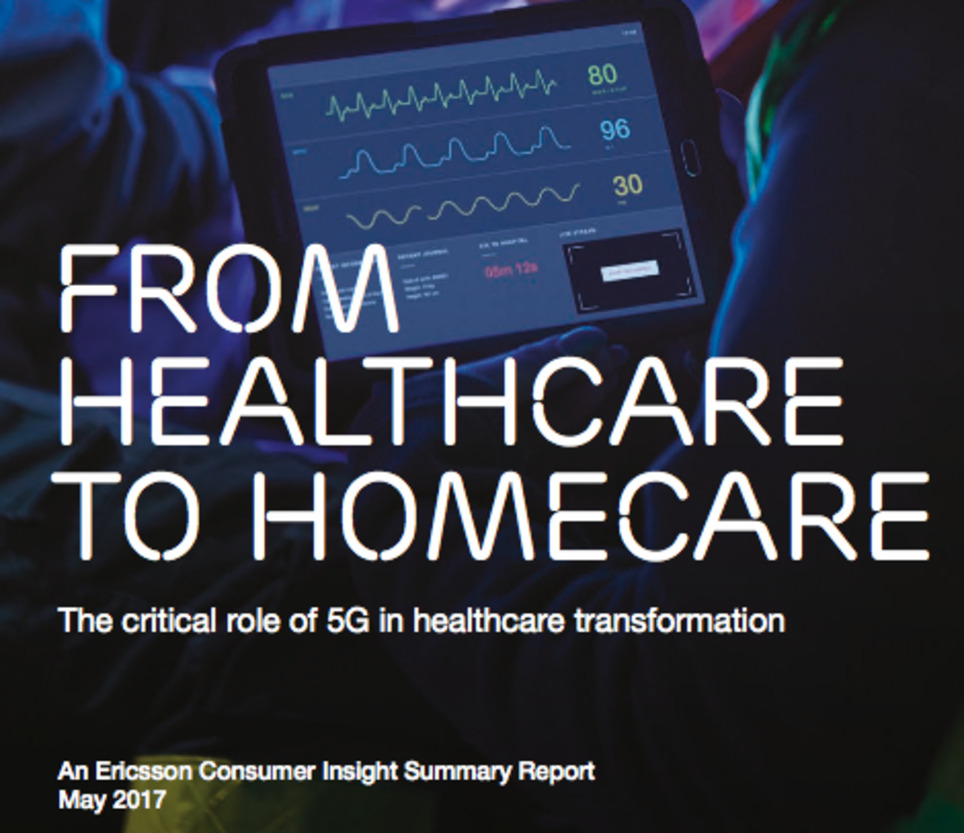

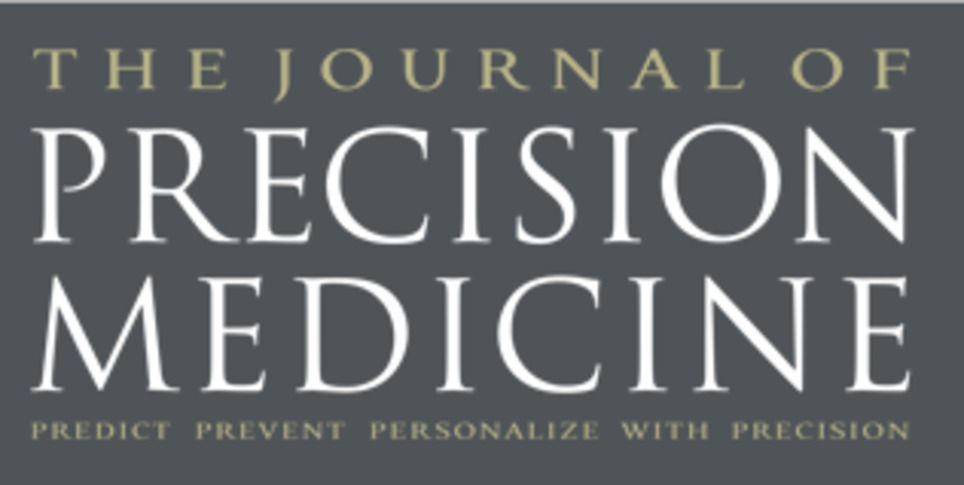
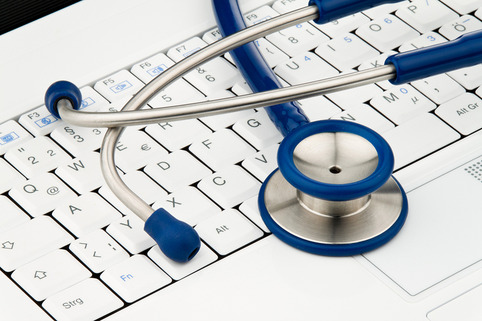
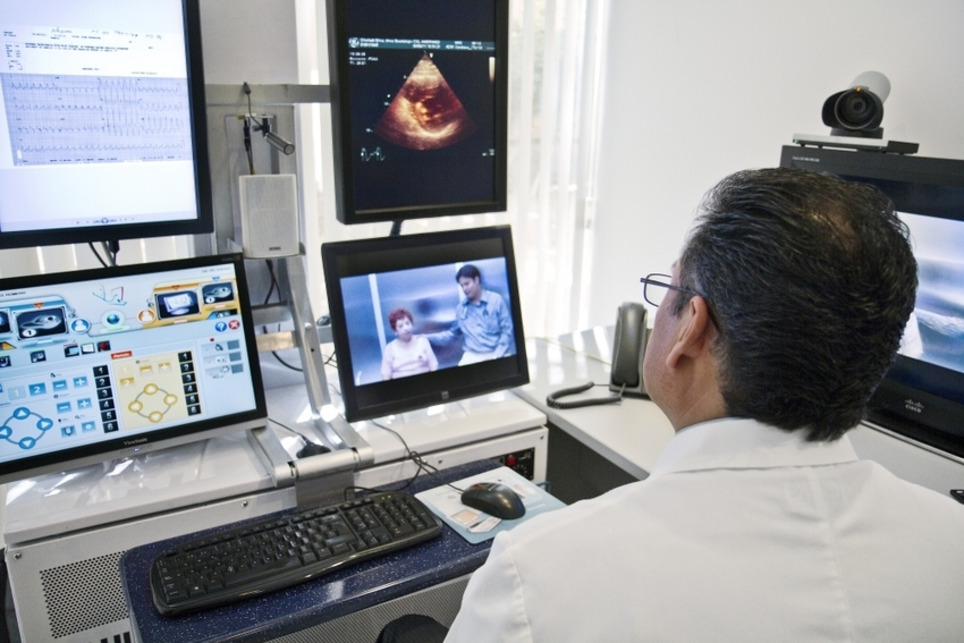
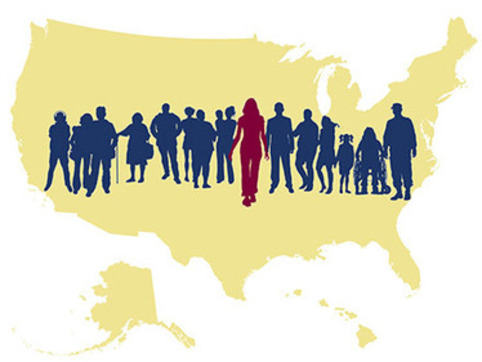





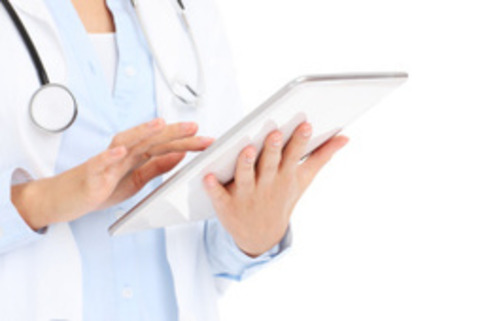


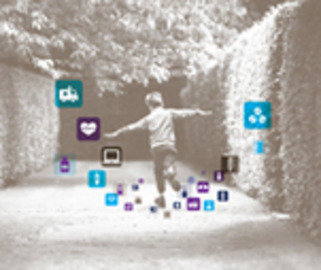










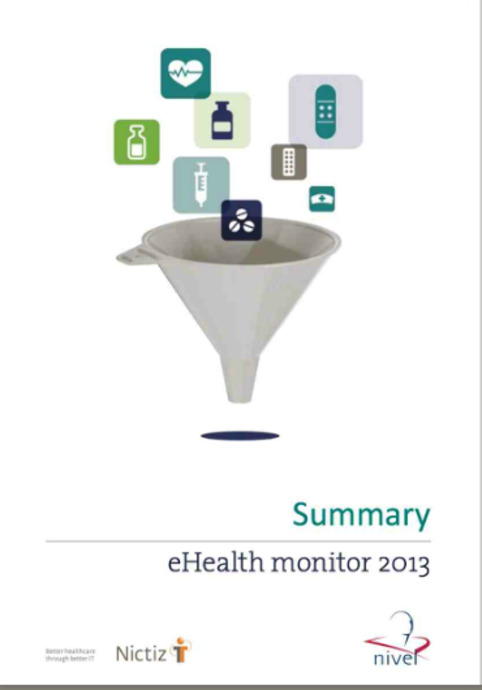








Mobile development in health care provision demands integrated care. We 've said it before: it urges all stakeholders to work together in a co-creative way - not just "doing things with each other" See http://bit.ly/co-creation-in-care ).
There's more to designing care than just settling on who does what. The art of doing business in care is a thing to learn. There are three different kinds of care: See http://bit.ly/Integration-of-care